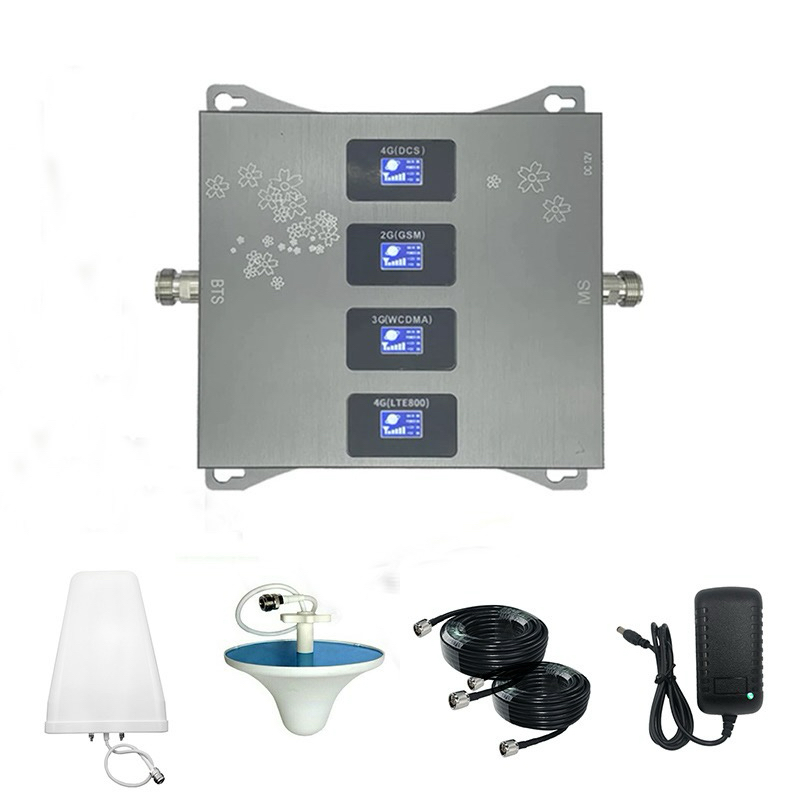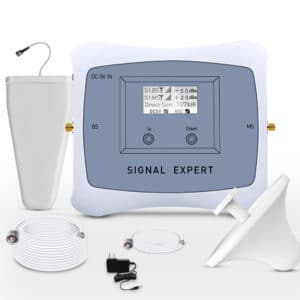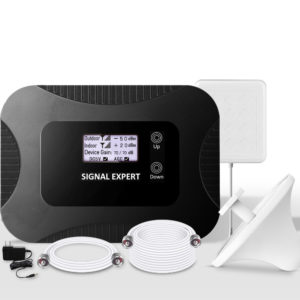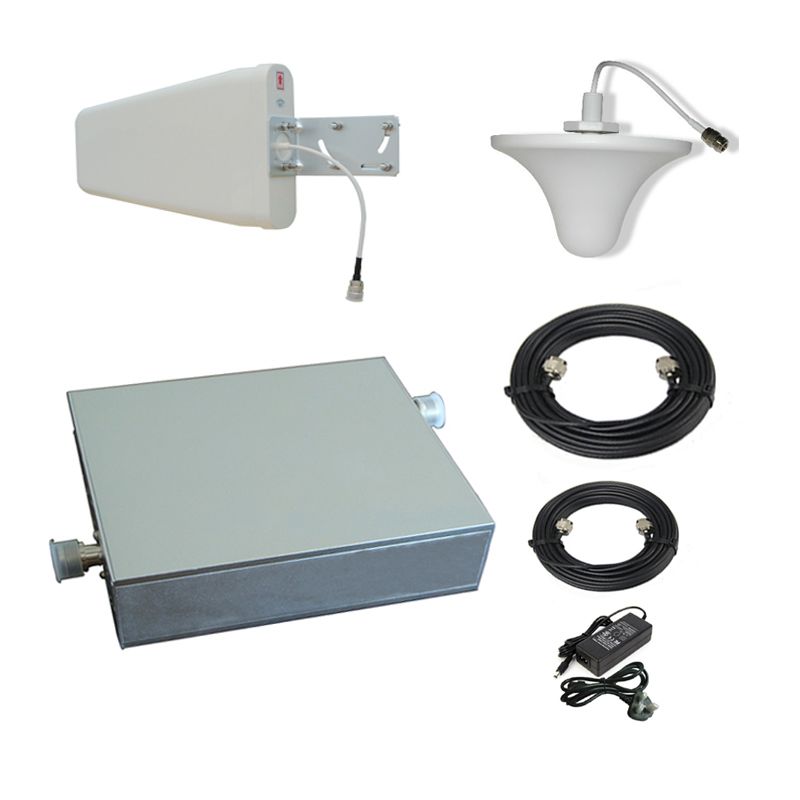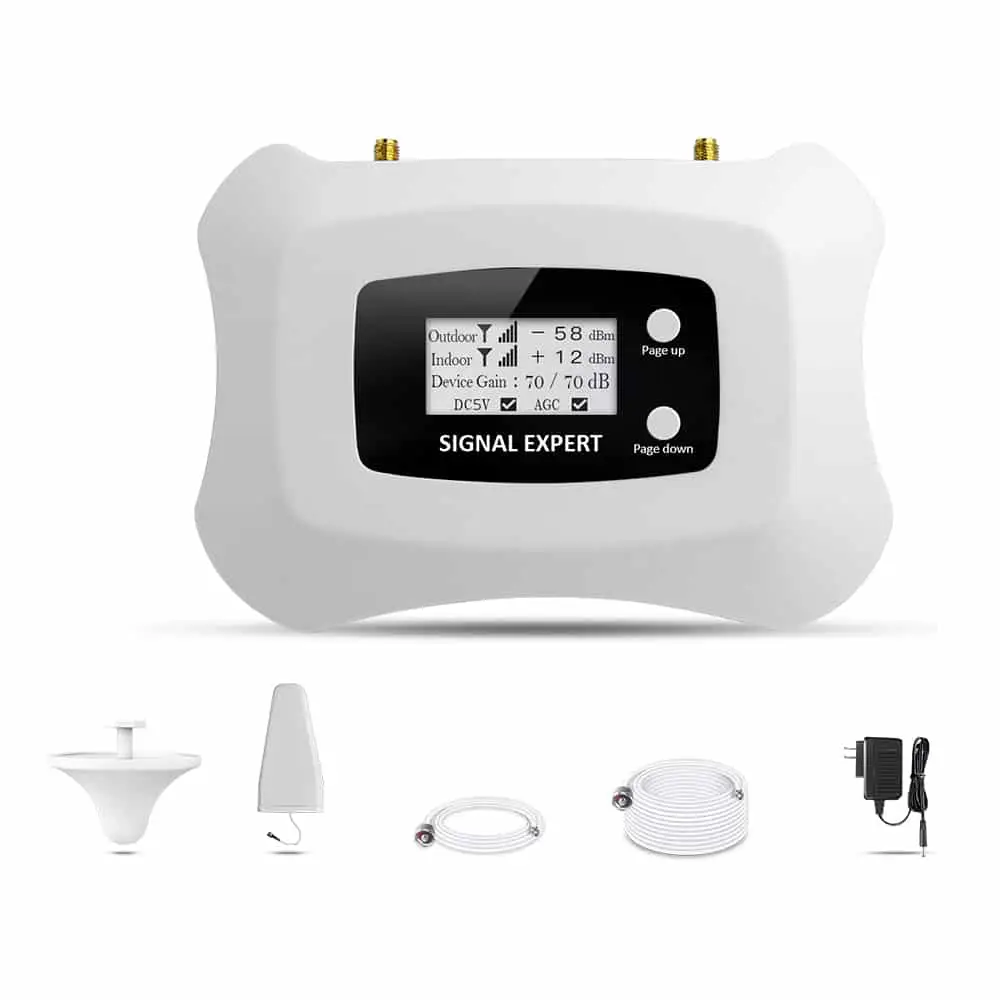Why You Have Bad Mobile Signal
It’s really irritating and frustrating to have bad mobile signal and frequent call drops along with terribly slow and intermittently broken data connectivity. Before we talk about solutions, we need to cover the reasons why you’re experiencing a bad mobile signal even when you are paying your phone bills on time.
There are three main causes of a bad mobile signal:
- Your distance from the Mobile Phone tower
- Obstacles in the way of the cellular signal
- Construction materials that make up the exterior of your building
We’ll cover each of these causes in more detail.
Distance from the Mobile Phone Tower
Cellular signal is broadcasted from towers that are installed by your carrier (Vodafone, 2 Degrees, Spark, etc.). The closer you are to a Mobile Signal tower, the stronger the cellular signal is going to be. As you move further away from the cell phone tower, the cellular signal becomes weaker. This is known as attenuation, until at some point it’s too weak to hold a call or transfer data.
Being too far away from a cell phone tower is the most common reason for weak mobile signals. You’ll often experience weak mobile signals if you live or travel in very rural areas.
Obstacles in the Way
The second reason for poor cellular signals is the presence of obstacles between you and the nearest mobile tower. For instance, a mountain, hill, or building may interfere with mobile signal connectivity. You may also experience this cellular signal problem if you’re at the bottom of a valley or underground. In this case, you don’t have a direct line of sight to a nearby mobile tower.
Mobile Signal is not usually able to penetrate through large obstacles, so it’s not able to reach you. The mobile signal may bounce off of other hills or buildings and reach you through reflection, in which case you’ll notice that your signal is weaker and may fluctuate up & down. In such cases, you’ll most likely end up with no signal in your location.
Construction Materials
The last major cause of cellular signal problems is the construction materials that make up the building that you’re in.
Brick, block, concrete, sheet metal, and wire mesh construction materials are some well-known and obvious blockers of mobile service. Things like energy-efficient window coatings, tile or metal roofs, and water fixtures can also cause major signal issues.
If you find that you have a usable cellular signal outside of the building, but it drops significantly once you step inside, then construction materials are the most likely culprit for the problem.
Combinations of Causes
Unfortunately, these causes of bad mobile signal frequently work in combination. So, you’ll find a rural house with a weak outside signal and sheet metal walls that completely block the signal from entering the building. Or a house in a valley without a clear line of sight to the nearest mobile tower. And no other nearby mobile towers with which to receive a signal.
When we’re looking at solutions to solve your mobile phone signal issues, it’s good to have an idea of what combination of causes is creating the problem that you’re facing, so that the right solution can be put into place.
What is the Solution to the Bad Mobile Signal?
Thanks to the technology there are mobile signal boosters available in the market which help you enhance the bad or weak signal from the mobile tower into a stronger signal inside your house or building you are in.
Now if you are thinking about what these mobile signal boosters are and how they work to enhance the weak mobile signal into stronger signal we will answer those questions in this post.
What are Mobile Signal Boosters?
Mobile signal boosters are tiny, easy to install and legally use electronic devices. It helps you enhance the signal strength from the cellular tower into your house or office.
Mobile phone signal boosters are also known as a cell phone signal repeater which receives the weak signal from the mobile tower through an external antenna and enhances its signal strength with help of an amplifier and then broadcasts it into your house or office through an internal antenna. This way you get a strong mobile signal into your house.
Mobile phone boosters come in various types. You may choose the cell phone signal booster based on the area of your house or office, or from your mobile carrier company, or the frequency you use for your mobile.
You can also choose from a single-band, dual-band or tri-band cell phone signal booster. Simply, the single-band mobile signal boosters are built specifically for one mobile service provider and to boost only one type of signal, for instance, Vodafone, Spark Mobile, 2 Degrees, 4G, etc. Dual-band mobile signal booster can enhance 2G & 4G signal strength Vodafone, Spark Mobile, or 2 Degrees, etc. Whereas the four-band mobile signal boosters can help you enhance all types of signals i.e., 2G, 3G, and 4G signals for all mobile networks. Based on your mobile service provider and the area you want to cover you can choose the right mobile signal booster.
The signal booster also works in reverse, so when a phone call is made or data is used by a mobile device, it passes through the system, is amplified, and then broadcast to the nearby mobile towers.
How Does a Mobile Phone Signal Booster Help?
A cell phone signal booster is designed to solve the three main causes of poor mobile phone signal in the following ways:
- Distance from the Cellular Tower: The signal booster amplifies the weak outside mobile signal, both to and from the nearby mobile towers, to compensate for the distance.
- Obstacles in the Way: An Omni outside antenna or a Yaggi Antenna can receive and broadcast a strong mobile signal in all directions to maximize the chance that the signal will make it around the obstacles in the way.
- Construction Materials: The signal booster uses a high-quality cable to route cellular signals around the construction materials that are blocking the signal and then distribute it to the areas that need better reception.
If you have some usable cellular signal outside, a cell phone signal booster should be able to solve your signal problems and provide you with much better service in your home, business or vehicle.
For your convenience, we have built a product wizard on your website which quickly helps you choose the right mobile phone signal booster for yourself. Check that out.
Signal Strength & Coverage
The most significant thing to understand with cell phone signal boosters is that the strength of the outside signal has a major effect on how much coverage you’re going to receive from a cell signal booster.
If you have a weak existing outside signal, you’re only going to receive a small amount of coverage from a cell phone signal booster, since the booster does not have many existing signals to boost. In case the outside signal becomes stronger, then the size of the coverage area inside of the home, business or vehicle would also grow.
If the outside cellular signal remained at the same weak level, then the next best way to provide more coverage inside would be to purchase a signal booster with a more powerful amplifier.
For this reason, it’s very important to know what your existing outside Cellular signal strength is. Since that will determine what size booster you should purchase to adequately cover your inside area with a boosted signal, or whether you need to install multiple systems.
You can always call our customer service team to get help in choosing the right cell phone signal booster for your use. This will help you save both time and money. The time you will spend on researching, guessing and asking around and money because you would be helped to one product which will give you cellular signal coverage in your house or office.
2G, 3G, and 4G LTE
You’ve probably would have heard the terms 2G, 3G and 4G LTE mentioned before and wonder how those fit in when improving your cell phone signal.
- 2G was the second generation of cellular technology and was used for allowing people to make and receive voice calls using their mobile phones, as well as send text (SMS) and picture (MMS) messages. 2G is in the process of being decommissioned in most countries and the frequency bands are being repurposed for new technologies, like 4G LTE and 5G in the very near future.
- 3G was the next generation of cellular networks and allowed data to be sent over the cellular networks, in addition to voice calls and text/picture messages.
- 4G LTE is the present generation of cellular technology and is characterized by significantly faster data rates, as well as allowing voice calls to be sent over the data network, called VoLTE. All mobile phones and mobile devices sold in the past couple of years support 4G LTE and prioritize this network for calls and data.
- 5G is currently in development, its deployment will be rolled out in the next couple of years. It would have significantly faster data rates than 4G LTE.
Conclusion
So, even if you are only interested in boosting voice calls and not fast internet data, we still recommend that you purchase a signal booster that amplifies 4G LTE. With all modern phones supporting and prioritizing 4G LTE, getting a 4G LTE capable booster is the best way to future-proof yourself and ensure that your booster will continue to work even as the carriers decommission their older 2G and 3G networks. Every signal booster that supports 4G LTE should also support the 2G and 3G networks, so you’ve covered it in every way.

